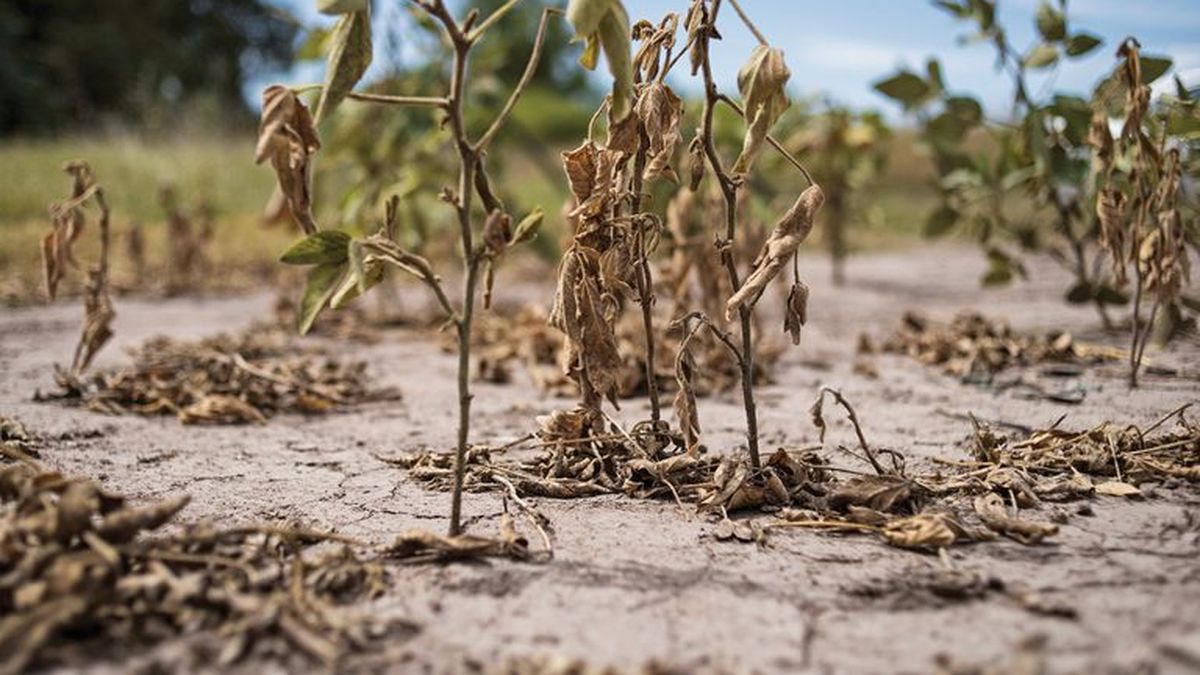Regarding the volume to be harvested, the information that emerges from the local level is not encouraging. The latest work published by the Strategic Guide for Agro released by the Rosario Stock Exchange (BCR) assured that the lack of water reserves already had an impact on early corn and first-class soybeans.
The situation is critical for the entire central region of the country. Cristian Russian, head of Agricultural Estimates of the Rosario entity, highlighted to Ámbito that “the normal scenario for the corn campaign was 56 million tons but with the impact of the drought, the first estimate we make based on a survey carried out in the last weeks, foresees a fall close to 15%, therefore the harvest is reduced to 48 million tons ”.
Russian explained that “in soybeans, the entity made a harvest projection and although the normal scenario was a floor of 45 million tons, with these current conditions the harvest was cut to 40 million tons.”
The years in which the La Niña weather phenomenon recurs are often chaotic for the local economy. Enrique Erize, president of the Novitas Consultant, assured when consulted by Ámbito that “the first time a Niña year was repeated was in 2009 and at that time soybean yields fell 33%, the next was in 2012 and the fall of yield was 17% and the last time was in 2018 when yields fell 23% ”.
According to Erize, if last year’s soybean harvest was 45 million tons, this year with less area and forecasting an optimistic cut of 17%, the campaign would be around 38 million tons. In the case of corn, the yields in those years fell between 18% and 24%, therefore at a minimum, production would fall by about 10 million tons.
Taking as a reference the data provided by the BCR, a cut of 8 million tons of corn and 5 million tons of soybeans implies losses for the country totaling 4,550 million dollars, only taking the value of the grain as a reference. The figure will undoubtedly be higher because our country industrializes a large part of the soybean crop and exports by-products with added value, such as soybean meal and oil with differential prices.
Beyond the drop in foreign exchange earnings, producers will also suffer a severe blow, who bet on plantings with a high technological level in a scenario of high costs.
Meanwhile, Ariel Tejera, head of the Market Analysis Department of the Grassi brokerage, stressed that “when weighing losses we must be cautious since it is a match that has not yet finished. Climate will continue to play a key role. We are in a campaign where every rain counts. We must be prepared to travel in markets that are very sensitive to the evolution of forecasts ”.
Now the expectation is for second-rate soybeans and late corn, which could offset part of the losses that have been recorded so far if it rains heavily during the second half of January.
Source From: Ambito
David William is a talented author who has made a name for himself in the world of writing. He is a professional author who writes on a wide range of topics, from general interest to opinion news. David is currently working as a writer at 24 hours worlds where he brings his unique perspective and in-depth research to his articles, making them both informative and engaging.




